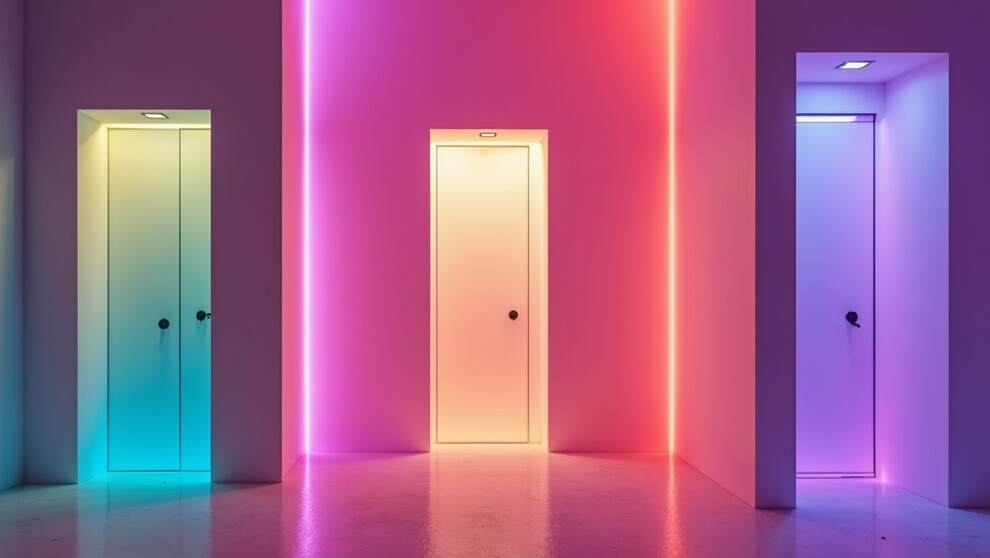A gay confession booth should be a space where people can express themselves freely and reflect on their experiences. This special concept provides us with an opportunity to share experiences, thoughts, and emotions in a secure and private setting that respects the diverse narratives of the queer community. It is a chance to admit truths, celebrate one’s identity, and find comfort as each person opens up about their inner self.
This article explains how to build, design, and experience a gay confession booth in a way that remains respectful. I developed these ideas from personal insights into creating environments that allow honest self-reflection. Every section provides practical steps and helpful questions so that whether you are building this space for personal exploration or designing a communal retreat, you have a clear and manageable plan to follow.
The following guide breaks down the process into clear steps, with careful considerations on design, emotional factors, technical setup, and ongoing care. I have prepared this all-in-one guide to offer a range of suggestions that will assist you in creating a comforting confessional space that upholds the values of openness, confidentiality, and the affirmation of fabulous gayness.
Step 1: Outline Your Confessional Concept
A thoughtful planning process begins with defining what a gay confession booth means to you. This space should not only accommodate personal expression and freedom but also guarantee privacy and emotional safety. It is not merely a physical structure; it is a supportive concept that actively affirms identity and provides reassurance. By spending time to figure out its purpose, you set the stage for a setting where every visitor feels welcome and validated, ready to express personal truths.
Questions to Ask Yourself:
- What goals do I have for this confessional experience?
- How do I envision the role of the booth in encouraging personal and communal reflection?
- Which emotions and experiences do I want to spotlight in this space?
- How can the design ensure both privacy and openness?
Example Concepts for a Confessional Booth:
- Create a warm atmosphere that celebrates various identities.
- Offer a sense of confidentiality that encourages sincere admissions.
- Incorporate meaningful symbols that reflect queer pride journeys.
- Allow for moments of solitary reflection as well as guided sessions for community support.
Setting a clear concept for your booth guides every design and planning decision. Reflecting on these questions creates a foundation that ensures the booth is not just a structure, but a place of affirmation, healing, and personal growth.
Step 2: Structure the Physical Setting
Translating your idea into a tangible space is a practical yet rewarding task. Whether the booth becomes part of a larger community center or a stand-alone installation, its physical layout is key to making users feel at ease. Every detail—from the size and location to the choice of materials—works together to create an inviting atmosphere.
Elements to Consider:
- Location: Choose a spot that is easily accessible while still offering the privacy needed for personal reflection.
- Size: Ensure the booth is spacious enough to comfortably accommodate personal belongings and any technology you may use.
- Acoustics: Employ materials that minimize echoes, creating a quieter, more intimate environment.
- Lighting: Use soft natural or ambient lighting to set a calm mood and help visitors relax.
Designing a Balance:
- Keep décor simple so that it does not distract from the personal emotions being shared.
- Include comfortable seating to promote long periods of thoughtful reflection.
- Add decorative touches such as subtle artwork or gentle color highlights that mirror the vibrancy of the celebrated identities.
The physical design of the booth is critical for creating a safe and supportive space. Every material choice and design decision should contribute to an atmosphere of quiet sincerity and genuine openness.
Step 3: Choose Your Confession Format
There are several creative formats available for the gay confession booth. Each option caters to a different style of expression, ensuring that users feel both comfortable and engaged throughout their experience.
The Different Formats Include:
- Audio Confessions: A hidden microphone or recording device captures verbal expressions in a secure fashion.
- Written Confessions: Digital or paper-based notes allow users to jot down their thoughts in complete privacy.
- Interactive Art Installations: Panels or canvases invite us to add colors and imagery that represent their emotional state.
- Sensory Experiences: Ambient sounds and calming fragrances combine to create a soothing background that aids self-reflection.
Considerations for Each Format:
- Choose a system that safeguards anonymity and preserves the privacy of users.
- Provide clear, straightforward instructions on how to use the available technology or materials.
- Incorporate backup options so that if one method fails, another reliable alternative is available.
- Plan for periodic updates and maintenance to keep the system secure and effective.
Selecting a confession format that aligns with the needs of vulnerable queer sheep is essential. A well-chosen format creates a user-friendly experience where we all feel safe enough to express their true feelings.
Step 4: Limit Distractions and Create the Right Atmosphere
A critical feature of any effective gay confession booth is reducing external disturbances. The design should encourage uninterrupted moments where visitors can be completely authentic, free from the intrusion of outside noise or distractions.
Ways to Help Visitors Stay Focused:
- Silence: Select a quiet location or incorporate soundproofing elements to keep external noise at bay.
- Technology Settings: Mute or turn off devices that might interrupt the session, ensuring the focus remains inward.
- Intentional Design: Use simple and clear signage to guide visitors without overwhelming their senses.
Creating an environment that minimizes distractions lets visitors concentrate fully on their inner thoughts and feelings. This simplicity sparks a reflective experience that is both personal and meaningful.
Step 5: Plan the Process Experience
After the physical setup is complete and the confession format is chosen, planning the overall process becomes vital. Consider every step of the visitor’s experience—from entering the booth to leaving—so that they feel supported and guided throughout their time inside.
How to Structure the Experience:
- Begin with a welcoming statement or brief guide at the entrance to help visitors feel immediately at ease.
- Provide a concise explanation of the booth’s purpose and the rules of confidentiality, whether the process is self-guided or assisted by a facilitator.
- Design the session with multiple stages, such as an initial confession followed by reflective prompts.
Examples of a Session Flow:
- A calm introductory message that sets expectations and reassures users of the booth's secure nature.
- During the session, include gentle prompts or questions that nudge visitors toward deeper self-reflection.
- After the session, offer resources like hotline numbers or further reading materials for anyone needing additional support.
A carefully mapped process ensures that every visitor’s journey through the booth is smooth and meaningful. This structured approach supports us as we shantay complex emotions while sparking a sense of calm and security.
Step 6: Give a Boost to the Booth Environment
The booth’s atmosphere plays an important role in supporting both emotional safety and creative expression. Thoughtful adjustments can transform the space into a serene retreat that is both intimate and energizing.
How to Boost the Environment:
- Lighting: Use adjustable lighting that casts a warm, inviting glow. Dim lights can be fine-tuned to match the comfort levels of those inside.
- Soundscapes: Introduce gentle background music or nature-inspired instrumental tracks that establish a relaxed tone throughout the session.
- Aromatherapy: Add subtle scents, such as lavender or sandalwood, to promote relaxation and help soothe the mind during reflective moments.
- Decorative Touches: Include tasteful elements like soft artwork or calm color palettes that add personality without overwhelming the senses.
Giving a boost to the environment in these ways leads to an immersive experience where every detail harmonizes to create a safe haven for genuine self-expression. By attending to both visual and sensory aspects, the booth evolves into a sanctuary—a place not merely for confession, but for deep personal healing and reflection.
Step 7: Maintain Consistency and Adapt When Needed
The process of creating and managing a gay confession booth is ongoing. It is essential to continually update and refine the space so that it remains true to its core purpose of offering a secure venue for expression.
Tips for Long-Term Success:
- Establish a routine that fits naturally into the everyday lives of users.
- Regularly review the booth’s condition and actively seek visitor feedback to guide improvements.
- Stay flexible and ready to adjust the process as needs evolve over time.
- Plan routine maintenance to ensure that both technology and décor remain in optimal condition.
Regular upkeep and thoughtful adaptations ensure that the booth continues to serve as a trusted space. Keeping a close watch on both the physical environment and user experiences guarantees a consistently welcoming retreat.
Common Questions & Troubleshooting
What if the booth feels too empty or sterile?
Even a minimalist booth benefits from small, personal touches. Adding a few decorative elements, familiar textures, or a soft soundscape can break any sense of sterility and create a warmer, more inviting atmosphere.
How can I ensure that confidentiality remains protected?
- Use secure recording or writing systems that minimize any risks associated with data storage.
- Clearly communicate the levels of privacy and data protection to every visitor.
- Make sure that any digital interfaces are password protected and shielded from unauthorized access.
What if a visitor feels overwhelmed during a session?
It is important to include gentle prompts suggesting breaks and to advise users to take moments for self-care if needed. Additionally, providing supportive resources both on-site and in print reassures users that help is always available should they need it.
Wrapping Up & Next Steps
The concept of a gay confession booth presents an innovative way to approach personal truth and community support. Creating a space that respects privacy while celebrating identity is a meaningful endeavor that can resonate with anyone seeking emotional clarity and self-affirmation.
Your Action Plan:
- Select one design element or process improvement you can implement in the coming weeks.
- Review your goals for the booth regularly to ensure it continues to meet the evolving needs of its users.
- Gradually add or adjust features with a focus on maintaining a secure and supportive setting.
I encourage you to consider the unique touches that can make your confession booth a safe retreat for honest self-expression. The experience not only supports personal growth but also helps build bridges within a community focused on understanding and inclusion. Taking that first step might just be the start of a transformative ride toward deeper personal insight and lasting connection.




